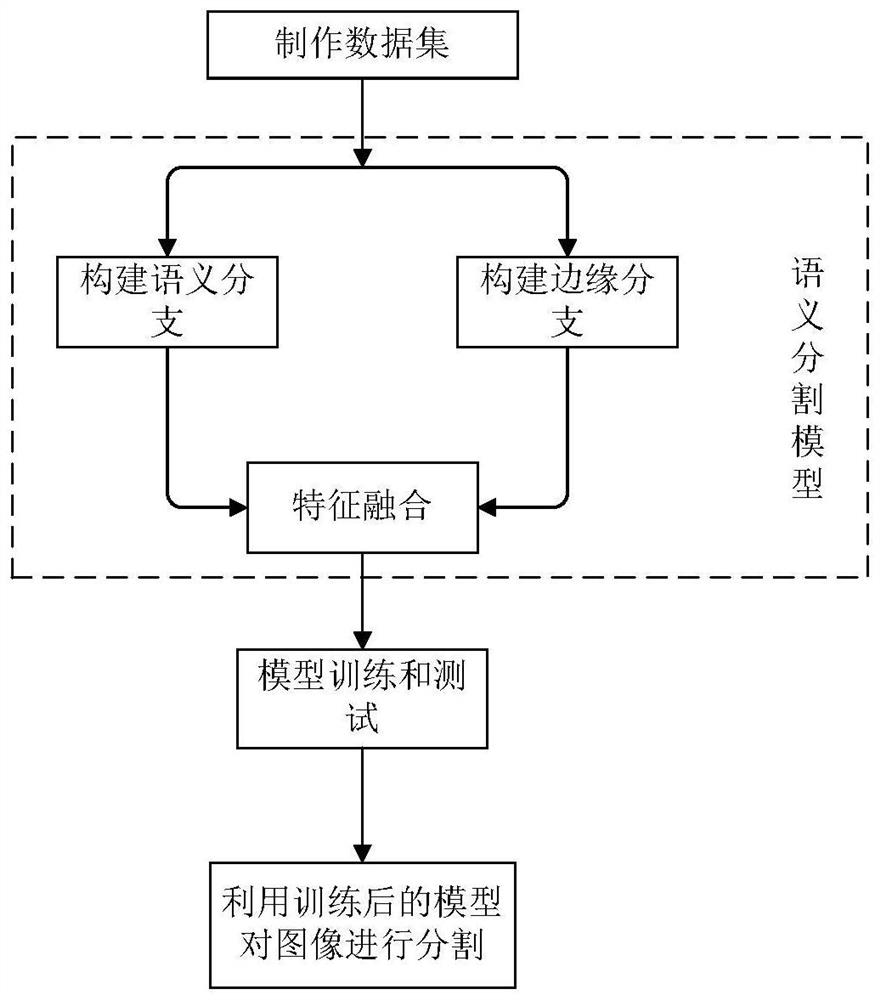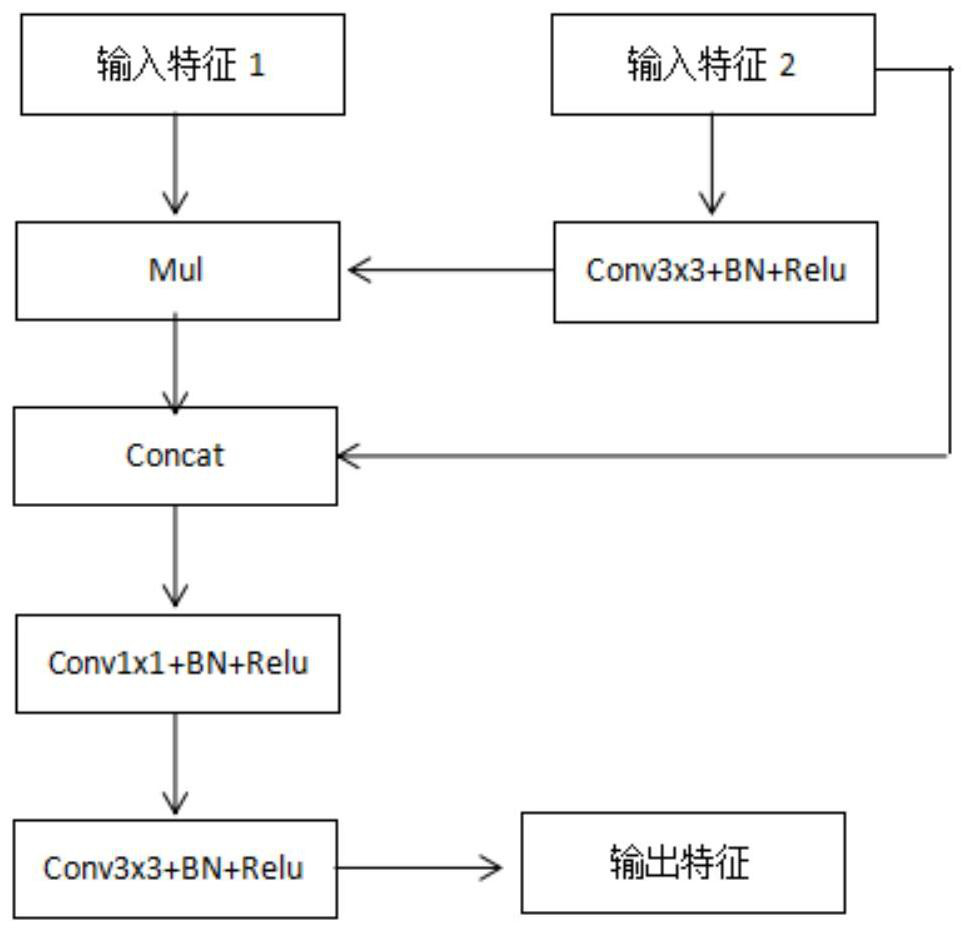Edge perception image semantic segmentation method based on adaptive feature fusion
A technology of semantic segmentation and feature fusion, applied in image analysis, image data processing, neural learning methods, etc., can solve the problems of insufficient extraction of image edge features, large noise information, and poor model segmentation performance in the edge area. Optimize the segmentation effect and improve the robustness effect
- Summary
- Abstract
- Description
- Claims
- Application Information
AI Technical Summary
Problems solved by technology
Method used
Image
Examples
Embodiment Construction
[0042] The invention will be further described below in conjunction with the accompanying drawings and specific implementation examples.
[0043] Such as figure 1 As shown, an edge-aware image semantic segmentation method based on adaptive feature fusion, including:
[0044] Step 1: Make a data set, collect N images and perform pixel-level classification and labeling on each image. Each sample in the data set includes an image and the pixel-level labeling result of the image;
[0045] The data set used in this embodiment is the ISPRS Vaihingen data set, which contains six categories: impermeable surface, buildings, low vegetation, trees, cars, background; the data set contains 33 images in total, and the image average The size is 2494×2 046, and the spatial resolution is 9cm.
[0046] Data preprocessing, in order to further improve the segmentation accuracy of the model, methods such as random flipping, random cropping, and random scaling are used for the training data set. ...
PUM
 Login to View More
Login to View More Abstract
Description
Claims
Application Information
 Login to View More
Login to View More - R&D
- Intellectual Property
- Life Sciences
- Materials
- Tech Scout
- Unparalleled Data Quality
- Higher Quality Content
- 60% Fewer Hallucinations
Browse by: Latest US Patents, China's latest patents, Technical Efficacy Thesaurus, Application Domain, Technology Topic, Popular Technical Reports.
© 2025 PatSnap. All rights reserved.Legal|Privacy policy|Modern Slavery Act Transparency Statement|Sitemap|About US| Contact US: help@patsnap.com



